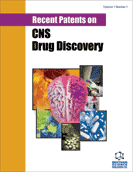Abstract
Synaptic transmission and, consequently, neurological processes are regulated by neurotransmitters and other neuro-modulators that recognize specific receptors. There are two main families of receptors that are targets for most of the compounds which act in the central nervous system (CNS); ion channel coupled receptors and G-protein coupled receptors (GPCR). The drugs that act through these receptors and are used for the treatment of different diseases related with the CNS, have traditionally been classified as agonists or antagonists. However, since the discovery of the constitutive activity of some neurotransmitter receptors during the eighties, the inverse agonist drugs have emerged as a new group of bioactive compounds with the ability to decrease receptor basal activity. New experimental evidence indicates that pathologies associated with different diseases that affect the CNS physiology could involve constitutively active receptors. Therefore, different methods and systems have been patented to explore the receptors that show high basal activity and to test the decrease of the receptor activity produced by inverse agonist compounds. In recent years some inverse agonist drugs and their targets have been patented which are capable of treating CNS related disorders. These include inverse agonists that are selective for serotonin or histamine receptors aimed at treating neuropsychiatric disorders, cannabinoids with an anorexigenic effect and inverse agonists selective for gabaergic receptors for the treatment of neurodegenerative or cognitive disorders.
Keywords: Inverse agonism, agonist, G protein coupled receptor, GPCR, constitutive activity, central nervous system, GABA, dopamine, serotonin, cannabinoids
 1
1





















